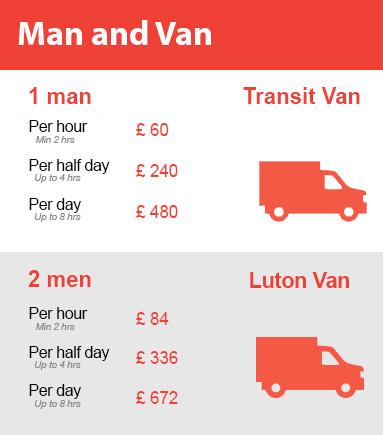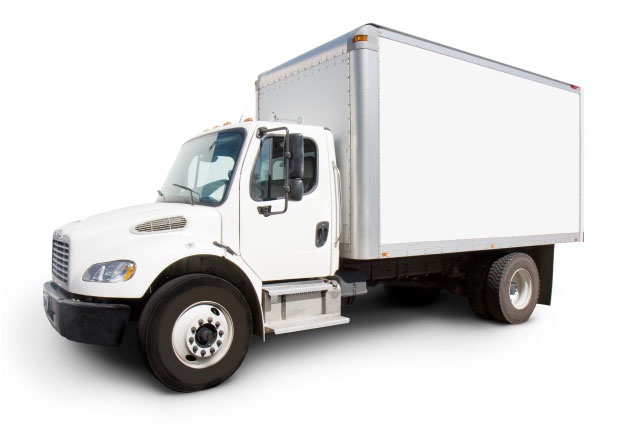Efficient Techniques for Moving Your Bed and Mattress
Posted on 23/06/2025
Efficient Techniques for Moving Your Bed and Mattress
Relocating can be both exciting and overwhelming, especially when it comes to moving large and bulky items like your bed and mattress. These essential pieces not only provide comfort but also represent a significant investment, which is why using efficient techniques for moving your bed and mattress is crucial. In this comprehensive guide, we'll explore proven strategies to help you safely and effectively move your sleeping setup to your new home.

Why Use Effective Bed and Mattress Moving Methods?
Moving beds and mattresses isn't just about convenience--it's about protecting your muscular-skeletal health, preventing damage to your items, and ensuring a smoother transition into your new living space. Whether you're a college student, a family homeowner, or a renter, using efficient bed and mattress transport techniques will save you time, money, and hassle.
Key Benefits:
- Prevents injury--avoiding strains, sprains, and back pain
- Protects your investment--reduces risk of tears, stains, or structural damage
- Saves time and energy--streamlined processes make moving day smoother
- Reduces moving costs--preparation prevents additional expenses
Pre-Move Preparations: Your First Step
Preparation is the foundation of any successful move. Before you start hauling your mattress and bed frame, spend some time planning and gathering supplies. Preparation ensures efficient and damage-free relocation of bedroom furniture.
1. Gather the Right Moving Supplies
- Mattress bags or covers: Protects against dirt, moisture, and pests
- Moving blankets and padding for headboards and footboards
- Furniture sliders for easier movement across floors
- Heavy-duty straps or rope for securing pieces in the truck
- Basic toolkit: screwdriver, Allen keys, adjustable wrench for disassembly
- Packing tape and zip ties to bundle parts and hardware
- Plastic bags to store screws, bolts, and other small items
- Hand truck or moving dolly: especially helpful for heavy box springs
2. Measure Everything
- Doorways, stairwells, and hallways: Make sure your bed and mattress fit
- Your mattress and bed frame dimensions: For planning clearance and truck space
Taking these measurements ensures you won't get stuck in a tight spot on moving day. Many mattress moving tips begin with proper planning and preparation.
Disassembling Your Bed Frame
Most beds become easier to move once taken apart. Disassembling your bed frame not only reduces its bulk and weight but also minimizes the risk of damage.
Follow These Disassembly Steps:
- Remove the bedding. Strip sheets, pillows, and comforters and pack them separately.
- Take out the mattress and box spring. Set these aside and focus on the frame.
- Unscrew the headboard and footboard. Use the appropriate tool (screwdriver, wrench, or Allen key) and keep all hardware in labeled plastic bags.
- Disassemble the rails and support beams. Take apart any slats or support pieces. Bundle similar items together.
- Label each piece. Use masking tape or sticky notes to note which parts connect together, making reassembly at your new home much easier.
Pro tip: Take a few quick photos during each stage of disassembly. These visual reminders will help you recall how to put your bed back together swiftly.
Protecting Your Mattress and Bed Frame
Efficiently moving your bed and mattress requires more than just muscle--it also demands protection. Mattresses and bed frames are susceptible to tears, dents, and stains if not properly shielded during transport.
How to Safeguard Your Sleeping Essentials
- Use a mattress bag or mattress box. These are specifically designed to shield against moisture, bugs, and dirt. High-quality options may offer some impact resistance.
- Wrap the frame in moving blankets. This prevents scratches and dings, especially for wooden or upholstered beds.
- Secure with tape or straps--but only on the blankets, never directly on delicate surfaces or fabrics.
- Use corner protectors. For ornate headboards or footboards, add padding to corners to avoid chips or cracks.
Proper Mattress Moving Techniques
Moving a mattress can be tricky due to its unwieldy size and weight. Efficient mattress moving techniques are essential to avoid damaging your mattress or injuring yourself.
Key Steps for Safe and Efficient Mattress Relocation
- Slide rather than carry whenever possible. Use furniture sliders to move the mattress across floors, minimizing lifting.
- Always use two people for lifting. Mattresses bend and flop, making them hard to handle solo.
- Keep your back straight and lift from your legs--avoid twisting.
- Stand the mattress on its side when maneuvering through tight spaces like doorways and hallways.
- Don't fold unless designed for it. Memory foam or latex mattresses can sometimes be folded (consult the manufacturer), but most innerspring mattresses should never be bent.
- Use a dolly or cart to wheel the mattress to the moving vehicle.
Bonus tip: If you must move the mattress in rainy or snowy weather, double-wrap it with plastic for waterproof protection.
Efficient Techniques for Moving Bed Frames
Bed frames vary in design--from simple metal platforms to elaborate sleigh beds. Regardless, efficient bed frame moving techniques will make your move smoother.
Best Practices When Moving Bed Frames
- Move pieces separately. Never attempt to carry the entire frame while assembled.
- Organize hardware and fasteners. Use labeled bags or containers to avoid losing essential parts.
- Protect decorative elements. Wrap decorative or fragile parts in bubble wrap or extra blankets.
- Team lift heavy items. Enlist help for large or bulky headboards.
- Use straps to secure parts. This prevents shifting during transit.
Loading Into the Moving Truck: Space and Safety Tips
Once your bed and mattress are ready for transport, strategic loading is key. The way you load can prevent damage and optimize space in your moving truck.
Step-by-Step Loading Advice
- Position the mattress upright, along the truck's longest wall. This prevents it from becoming warped and leaves floor space for other boxes and furniture.
- Secure the mattress with straps to keep it from shifting during transit.
- Load bed frame pieces flat or upright. If upright, wedge them between heavier items for stabilization.
- Stack lighter items atop the box spring. Never place heavy boxes on the mattress or box spring, as this can cause lingering indentations or break springs.
- Keep hardware and tools accessible. You'll want these first when unloading to reassemble your bed quickly.
Unloading and Reassembly: Fast and Stress-Free
The final step is getting your bed and mattress safely into your new bedroom and set up for a night of restful sleep.
Quick Tips for an Efficient Unload and Setup
- Carry the mattress and box spring in first. This clears space for frame assembly.
- Lay out all frame parts and hardware. Use your photos and labeled bags to reconstruct the bed.
- Assemble the frame in the intended position. This saves lifting once the frame is built.
- Check stability and tightness. Ensure all screws and bolts are secure before placing the mattress.
- Protect floors. Use furniture pads under frame legs to avoid scratches.
Special Tips for Different Types of Beds and Mattresses
Not all beds and mattresses are created equal. Consider special handling for the following:
Memory Foam or Latex Mattresses
- Can sometimes be folded--check the manufacturer's instructions.
- Avoid long-term compression to prevent foam deformation.
Hybrid and Innerspring Mattresses
- Never bend or fold. This can permanently damage the internal structure.
- Always move flat or upright on the side.
Adjustable Beds and Platform Beds
- Disassemble electronics and controls. Wrap and label all cords and components.
- Handle motors and wiring with care.
Hiring Professional Movers Versus DIY
While DIY offers control and potential cost savings, hiring professionals to move your bed and mattress may be well worth the investment. Professional movers have specialized equipment and expertise in efficient bed and mattress moving techniques.
When to Consider a Moving Service
- When moving king-size or extra-heavy beds
- For multi-story homes or tricky staircases
- If your bed or mattress is particularly valuable or fragile
- If you lack help or face physical limitations
Many moving companies offer bed and mattress wrapping, disassembly, reassembly, and insured transport as part of their services.
Common Mistakes to Avoid When Moving Beds and Mattresses
- Not using protection: Skipping covers or wrapping can lead to rips, stains, and even mold.
- Poor lifting technique: Always bend your knees and lift with help to prevent injury.
- Losing hardware: Always tape screws and bolts to corresponding bed parts or bag them.
- Moving in bad weather without waterproofing: Double bag your mattress if there's rain or snow.
- Forgetting to label parts: This makes reassembly much more difficult.
- Folding non-foldable mattresses: Snap, crackle, and pop--don't risk expensive damage!
Eco-Friendly and Donation Options
If you're upgrading your sleep setup, consider recycling or donating old mattresses and bed frames. Many local charities accept bed frames in good condition, and specialized recycling centers can repurpose mattress materials. Responsible mattress disposal keeps bulky waste out of landfills and can help families in need.

Conclusion: Move Your Bed and Mattress the Smart Way
Relocation doesn't need to be a pain in the back! Using efficient techniques for moving your bed and mattress protects your investment, your health, and your peace of mind. With careful planning, the right tools, and a step-by-step approach, you can confidently tackle your next move.
Remember, preparation is key: measure, disassemble, protect, and use help every step of the way. Whether you're moving across town or across the country, these strategies help ensure your first night in your new home is restful and injury-free.
Frequently Asked Questions
Can you move a mattress by yourself?
You can, particularly smaller sizes like twin or full, but it's easier and much safer to have help. Always use proper lifting techniques and consider a dolly for assistance.
What is the best way to protect a mattress during a move?
Use a mattress bag or mattress box to shield it from dirt and moisture. Double-wrap for rainy weather and always keep mattresses upright in the moving truck.
How do you reassemble a bed frame after moving?
Lay out all parts, reference your labeled bags and any photos taken during disassembly, and assemble the frame where you want it to stand. Tighten all hardware securely before placing the mattress.
Where can I find more tips for moving beds and mattresses?
Bookmark this article! For more detailed guides, consult your bed or mattress manufacturer, official moving company resources, or home improvement websites for updated bed and mattress moving tips and techniques.
Happy moving, and sleep well in your new home!





